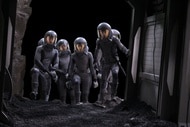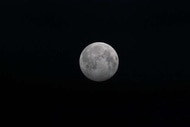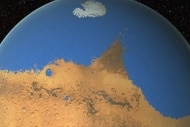Create a free profile to get unlimited access to exclusive videos, sweepstakes, and more!
Hold on tight: in 4 billion years, we're due for a galactic collision!
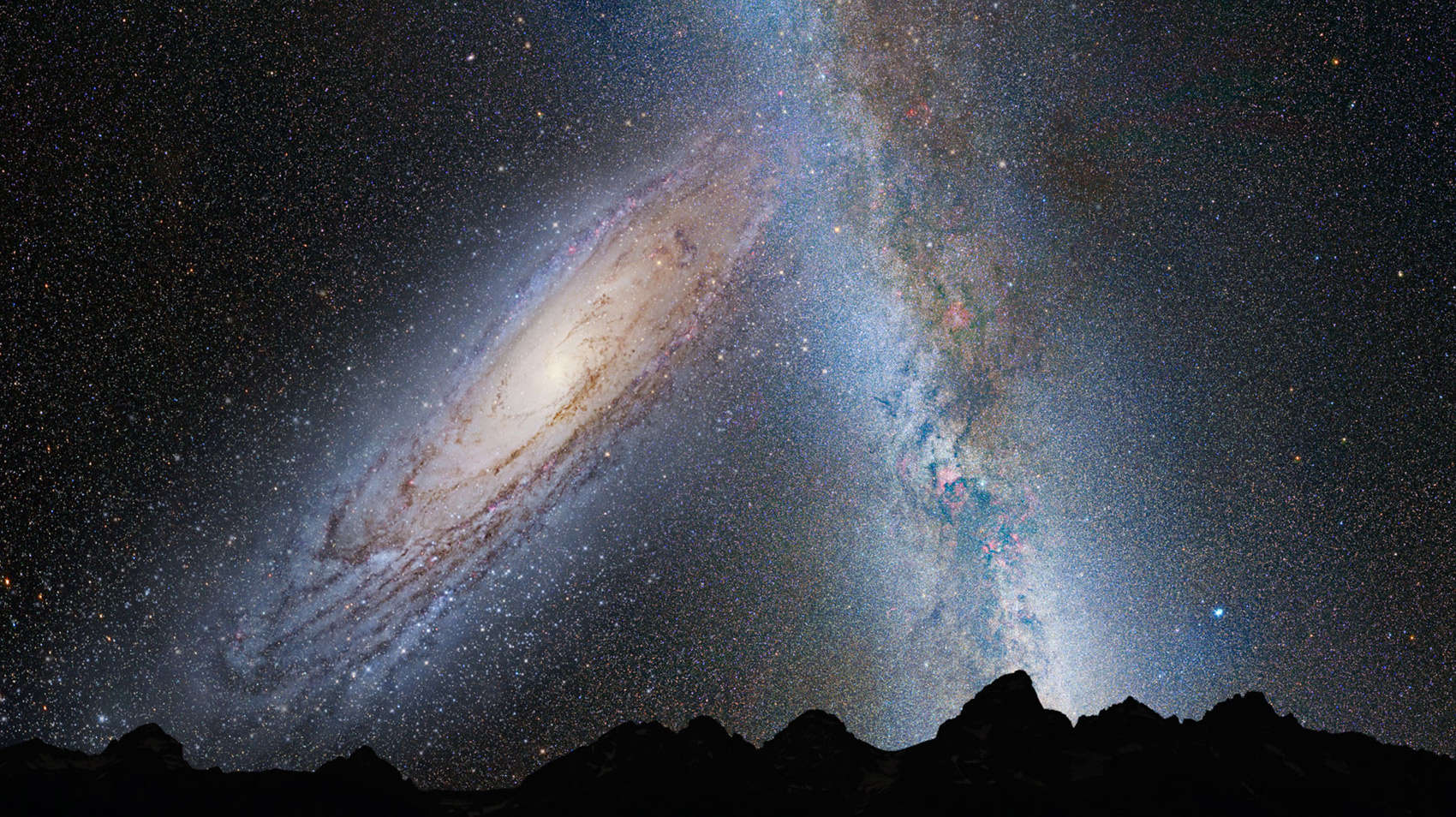
The galaxy we live in, the Milky Way, is a large spiral galaxy that lives in a small cluster of other galaxies called the Local Group. The other big member is the Andromeda galaxy, located about 2.5 million light-years away. That's a long way off, but we've known for a long time that Andromeda is heading more or less toward us at a speed of roughly 100 km/sec (60 miles/second).
The question is, is it headed directly at us, or does it have some "sideways" motion and will miss us? New results announced today by astronomers using Hubble show that -- gulp! -- Andromeda is headed right down our throats!
But don't panic. It won't happen for nearly 4 billion years.
This is a pretty cool result. They used Hubble to look at stars in Andromeda's halo, the extended fuzzy region outside the main body of the galaxy. By very carefully measuring the positions of the stars over seven years, they could directly measure the motion of those stars. Extrapolating that into the future has allowed the motion of the Andromeda galaxy itself to be determined for the first time.
So what's going to happen?
First, watch this awesome video of the collision based on the observations:
So here are the details:
Over the next few billion years, Andromeda -- currently a barely naked-eye object in the northern sky -- will grow larger as it approaches. In just under 4 billion years, the mutual gravity from the two galaxies will start to play havoc on each other. The Milky Way and Andromeda are about the same mass, so the effects they will have on each other will be profound. Stars on the outskirts of both galaxies will be drawn out, and long tails or streamers of stars and gas will be flung out.
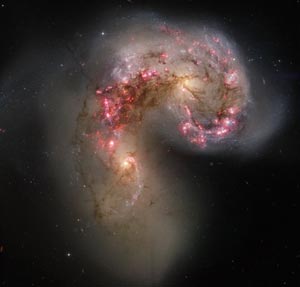 Then, over a hundred or so million years, the galaxies will physically collide. Stars are small and so far apart on galactic scales that the odds of two stars colliding (or even getting close enough to affect each other or any planets) are actually incredibly small. But gas clouds are huge, light-years across, so head-on collisions between them are inevitable. They'll crash into each other, collapsing, and furiously form new stars. These stars will light up the gas, and from a distance the two galaxies will be seen have long strings of fiercely glowing red gas along their arms, like the Antenna galaxies, shown here.
Then, over a hundred or so million years, the galaxies will physically collide. Stars are small and so far apart on galactic scales that the odds of two stars colliding (or even getting close enough to affect each other or any planets) are actually incredibly small. But gas clouds are huge, light-years across, so head-on collisions between them are inevitable. They'll crash into each other, collapsing, and furiously form new stars. These stars will light up the gas, and from a distance the two galaxies will be seen have long strings of fiercely glowing red gas along their arms, like the Antenna galaxies, shown here.
The two galaxies will probably pass right through each other, pulling apart even as chaos reigns inside each. But the pull of gravity will not be denied. They'll slow as they draw apart, eventually stop, and fall back into each other. At that point they'll merge, becoming a single, larger galaxy. It will probably be an elliptical galaxy, a big fuzzy cotton ball, as opposed to the spiral that each galaxy is now. That will take about two billion years after the initial collision, or six billion years from now.
Interestingly, the Sun will still be around then. It'll be different, having used up most of its nuclear fuel, and on its way to becoming a red giant. But it's possible the Earth and other planets will still exist! So it's possible someone (maybe not resembling humans too much, but still) may yet be around to watch this event unfold.
The Sun's orbit around the galaxy will change, though. Right now we orbit the Milky Way's center in a roughly circular path, taking over 200 million years to complete one orbit. According to the models the astronomers developed using the Hubble observations, during the collision the Sun will be flung into a looping elliptical orbit around the new galaxy's center, taking it farther out than we are now. That may be a good thing: Both the Milky Way and Andromeda have supermassive black holes in their cores, and these black holes will merge eventually as well. It's unclear what will happen when this occurs (though we may become an active galaxy, spewing out huge amounts of energy), but I suspect it's best to be as far from that as possible when it does!
These new results make me pretty happy. We knew that a collision was inevitable, but the timing has always been a question. In my book Death From the Skies! I wrote a chapter on this event, but based on what was known at the time (just a few years ago!) it was supposed to happen in 1-2 billion years. These new results double that to 4 billion, which means I have a firmer number to quote. Moreover, we didn't know if it would be a glancing blow at first or a head-on collision, and it looks now like it's headed right at us.
And while this sounds like a catastrophic event -- because it is -- we have some breathing room. Four billion years is long enough, I should think, for anyone.
Image credit: Hubble artwork: NASA, ESA, Z. Levay and R. van der Marel (STScI), T. Hallas, and A. Mellinger; Antenna galaxies: Image credits: Davide de Martin, NASA.









